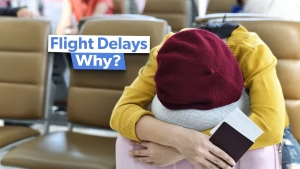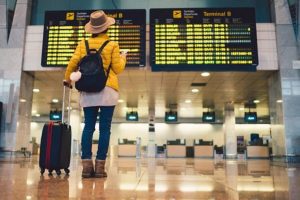“Ghost flights” are among the most misunderstood phenomena in air transport.
A ghost flight has no formal definition but is generally considered to be a flight that operates on less than 10% passenger capacity.
With aviation’s environmental footprint under close scrutiny, it is understandable that the issue of such flights has been getting attention. But how bad is the problem?
One report in the UK’s Guardian newspaper in September 2022 said that 5,000 “empty”, and 35,000 flights with less than 10% occupancy, had flown in the United Kingdom since 2019.
The story had significant flaws, however. Firstly, this period covered the pandemic, which was completely unrepresentative of a normal air transport market. Secondly, no context was given around the numbers. 40,000 sounds a lot, but in the context of the 4,566,382 flights that took place in the United Kingdom over that period—even during the unprecedented COVID-19 collapse in traffic—that comprises less than 1% of all flights.
Of course, any flight that takes place almost empty is bad for the environment and bad for airline finances. But precisely for these reasons, airlines don’t operate ghost flights without cause. The analysis in the Guardian failed to explain that many of these flights were cargo flights, carrying vital supplies, including vaccines and personal protective equipment, during the pandemic. The cargo demand and humanitarian need justified the operation of certain flights, even with low passenger load factors.
Similarly, there were a number of repatriation flights, or flights where passenger numbers were deliberately restricted to comply with COVID regulations set by governments. Additionally, there are always some flights to move aircraft to maintenance facilities or, as was the case during the pandemic, fly a significant number into storage.
Flights to protect slots?
Were any of these flights simply slot blocking? The 80-20 ‘use-it-or-lose-it’ rule was obviously not designed to work during a 95% collapse in demand, and the slot rules were cited as a potential cause of some flights having to operate unnecessarily in Europe.
But this was not the case in the United Kingdom, where the slot rules were suspended. There was a risk that some unnecessary flights could happen in the EU because the European Commission was too quick to restore higher slot use rates. However, for the most part during the pandemic, the slot rules were just about flexible enough that ghost flights were not a major issue.
When asked, IATA Director General Willie Walsh was unequivocal: “I’m not aware of any airline company that I’ve worked with deliberately operating an empty flight simply to maintain a slot.”
The bigger picture
The ghost flights non-story has, however, raised important questions that need to be answered on slot allocation rules. The European Union is looking again at its Slot Regulation, with a consultation in place leading to a potential revision of the rules in 2023.
Although the revision is focusing on wider issues of competition, accessibility, and capacity, the role of slot rules in promoting greener flying is also in the mix. In addition to international efforts to reach net-zero carbon emissions, the European Union has instigated its own initiatives through the EU Green Deal.
Some politicians erroneously believe the slot system is creating ghost flights or that the slot process should be used as part of the Green Deal to prioritize the use of quieter or more fuel-efficient aircraft. Aviation is committed to exploring a multitude of options for reaching net-zero CO2, but airlines are united in their view that slot allocation decisions linked to the environment will not help the industry achieve its global sustainability objectives.
“The pandemic was an exceptional period and extrapolating lessons or making policy changes based on the industry’s activities during this time would be a huge category error,” says Lara Maughan, IATA’s Head of Worldwide Airport Slots. “Fiddling with the slot process to try to promote greener flying sounds positive in theory, but in practice it would make the slot process even more complicated while having minimal environmental gain. Trying to micro-manage slots may even have a detrimental environmental impact.”
Part of the reason for this is the globally coordinated nature of the slot system. Airlines operating between two slot-coordinated airports must be able to work to a harmonized system of rules to best match demand with their planned schedule. If one country’s rules insist on operating the slot with a certain aircraft (for example for environmental reasons), then the airline may have to prioritise a non-optimal plane for that route, regardless of volume of demand—for example a narrowbody plane over a widebody. This will affect consumer access and choice, and potentially impact another route that would have benefitted from that aircraft choice.
Any attempt to micro-manage the process at a handful of global, slot-constrained airports will only displace aircraft elsewhere, making no overall improvement to emissions and negatively affecting the benefits of aviation connectivity for travelers and the economy.
More flexibility, not less
By far the best way to ensure that slots are used as efficiently as possible is to give airlines more flexibility, not less. This is particularly true during periods of crisis or demand shocks. Coordinators should be able to react with alternative and more flexible approaches. The value of the Worldwide Airport Slot Board’s recommendations for managing slots during COVID was recognised by regulators and adopted worldwide by many governments. The answer in Europe is for the revision of the slot process to align more closely with the Worldwide Airport Slot Guidelines and to increase the resilience of the system.
Prior to the pandemic, the slot system was delivering ever-more efficient use of capacity, while increasing consumer choice and ensuring reliable schedules. Far from ghost flights being an issue, the overall efficiency of air transport was improving year on year, with global passenger load factors reaching an all-time high of 83% (85% in Europe) in 2019. Moreover, after the pandemic lows, load factors have quickly rebounded, with Europe reaching 85% again in September 2022.
In terms of sustainability, the best way to tackle industry emissions is at source—from the engine. That is why the industry is focused on reducing CO2 through sustainable aviation fuels (SAF), radical new zero-emissions technologies, and reducing distance flown through more efficient air traffic management. Other out-of-sector solutions to reduce emissions, such as offsetting and carbon capture, are also important.
It is the industry’s hope and expectation that European politicians will focus on delivering the Single European Sky, which would generate up to 10% emissions savings, and promoting the Fit for 55 legislation to increase production of SAF.
“Regulators should ensure that the slot system sticks to what it does best—maximizing efficient use of scarce airport capacity and giving consumers and airlines the best balance of reliability and choice,” concludes Maughan. “Trying to use the slot system to deliver a theoretical marginal emissions gain threatens to upend the traditional purpose of the slots system and cause more harm than good.”
Source: Airlines






